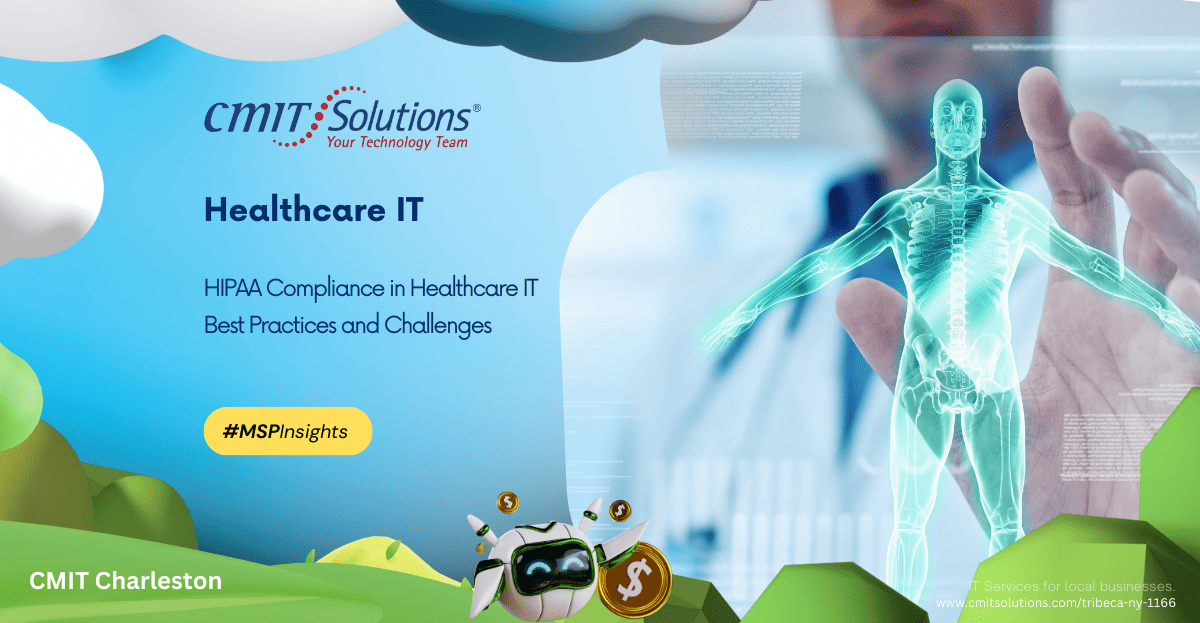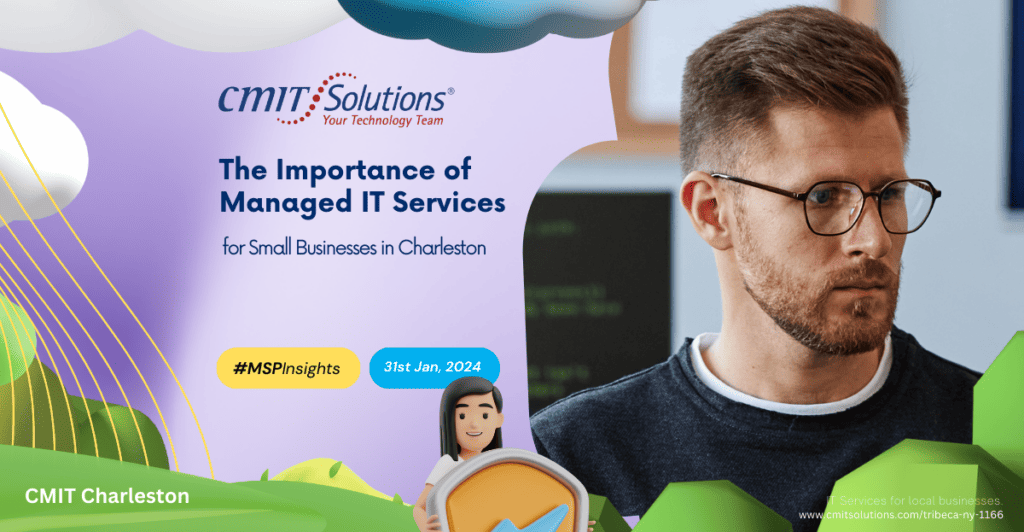Introduction:
In an era where everything is digitized healthcare organizations can be increasingly dependent on technology to facilitate the efficient management of patient data. The convenience of electronic health records from one place can grow into a burden if there is no total assurance that patients’ information will always remain confidential and secure Secondly, what do you think of the “distance” between HIPAA and technology We have talked about its development, how it operates, what responsibilities privacy professionals must assume when designing systems to be compliant with This new blog now addresses wrongdoing in migratory IT. After seven major publications concerning this regime took shape at the New York Times E-commerce was an outgrowth of the political power and wealth inequalities/plagiarism claims were constantly changing and very hard to resolve Title: HIPAA Compliance in Healthcare IT: Best Practices and Challenges Health Insurance Portability and Accountability Act (HIPAA) sets the standard for protecting patient data, and imposes strict requirements on healthcare IT systems. In this blog post we provide a framework for best practices and challenges facing HIPAA compliance in healthcare IT, offering insights into each aspect that will help organizations navigate these complexities wisely.
Overview of HIPAA Compliance Requirements:
HIPAA compliance is essential for healthcare organizations to safeguard patients’ protected health information (PHI) and avoid hefty fines and penalties. It encompasses various rules and regulations, including the Privacy Rule, Security Rule, and Breach Notification Rule. The Privacy Rule dictates how PHI can be used and disclosed, while the Security Rule mandates safeguards to protect the confidentiality, integrity, and availability of electronic PHI. Additionally, the Breach Notification Rule requires covered entities to notify affected individuals and the Department of Health and Human Services (HHS) in the event of a data breach involving PHI.
Importance of HIPAA Compliance in Healthcare IT:
Ensuring HIPAA compliance is crucial for maintaining patient trust and confidentiality. Non-compliance not only exposes healthcare organizations to legal consequences but also jeopardizes patient privacy and undermines the integrity of the healthcare system. By adhering to HIPAA regulations, healthcare IT systems can enhance data security, mitigate risks, and foster a culture of accountability and transparency.
Understanding Protected Health Information (PHI):
PHI includes any information that can be used to identify an individual’s health status or healthcare services provided, such as medical records, billing information, and demographic data. Understanding the scope of PHI is fundamental for implementing appropriate security measures and safeguarding patient confidentiality. Healthcare organizations must identify and classify PHI within their systems to ensure proper protection and compliance with HIPAA regulations.
Role of Technology in Ensuring HIPAA Compliance:
Technology plays a pivotal role in facilitating HIPAA compliance by enabling healthcare organizations to implement robust security measures and control mechanisms. From encryption tools to access controls and intrusion detection systems, technology solutions help safeguard PHI against unauthorized access, disclosure, and tampering. Furthermore, advancements in cybersecurity technologies empower healthcare IT professionals to detect and respond to potential threats proactively.
Implementing Access Controls for PHI Protection:
Access controls are critical for limiting access to PHI based on the principle of least privilege. Healthcare organizations must implement authentication mechanisms, such as strong passwords and multi-factor authentication, to verify users’ identities and grant appropriate access rights. Role-based access controls (RBAC) allow organizations to assign access permissions based on employees’ roles and responsibilities, ensuring that only authorized personnel can access PHI.
Encryption Techniques for Securing Patient Data:
Encryption is an indispensable security measure for protecting patient data both at rest and in transit. By converting sensitive information into ciphertext that can only be decrypted with the proper key, encryption safeguards PHI from unauthorized disclosure and interception. Healthcare organizations should employ robust encryption algorithms and protocols, such as AES (Advanced Encryption Standard) and SSL/TLS (Secure Sockets Layer/Transport Layer Security), to encrypt data stored on servers, laptops, mobile devices, and transmitted over networks.
Secure Communication Channels in Healthcare IT:
Secure communication channels are essential for transmitting PHI securely between healthcare providers, patients, and other authorized entities. Encrypted email, secure messaging platforms, and virtual private networks (VPNs) help prevent unauthorized interception and eavesdropping, ensuring the confidentiality and integrity of sensitive information. Healthcare organizations should implement secure communication protocols and technologies to safeguard PHI during transit and comply with HIPAA requirements for secure electronic communication.
Auditing and Monitoring Systems for Compliance Assurance:
Regular auditing and monitoring of healthcare IT systems are essential for detecting and mitigating security incidents, unauthorized access attempts, and compliance violations. Automated auditing tools and security information and event management (SIEM) solutions enable organizations to track user activities, monitor system logs, and analyze security events in real-time. By implementing robust auditing and monitoring mechanisms, healthcare organizations can demonstrate compliance with HIPAA regulations and proactively address security risks.
Training Staff on HIPAA Regulations and Policies:
Effective training and education are essential for ensuring staff awareness and compliance with HIPAA regulations and policies. Healthcare organizations should provide comprehensive training programs covering HIPAA requirements, data security best practices, and procedures for handling PHI securely. Training sessions should be tailored to employees’ roles and responsibilities, emphasizing the importance of confidentiality, data protection, and ethical conduct in healthcare IT environments.
Risk Assessment and Management in Healthcare IT:
Risk assessment is a proactive process for identifying, evaluating, and mitigating potential threats and vulnerabilities to PHI. Healthcare organizations should conduct regular risk assessments to assess the security posture of their IT systems, identify areas of weakness, and prioritize remediation efforts. By analyzing threats, vulnerabilities, and potential impact, organizations can develop risk management strategies to safeguard patient data, comply with HIPAA regulations, and mitigate security risks effectively.
Incident Response Protocols for Data Breaches:
Despite best efforts to prevent security incidents, healthcare organizations must be prepared to respond promptly and effectively in the event of a data breach. Establishing robust incident response protocols and procedures is essential for containing breaches, mitigating damage, and complying with HIPAA breach notification requirements. Incident response plans should outline roles and responsibilities, escalation procedures, communication protocols, and steps for conducting forensic investigations and remediation activities.
Vendor Management and HIPAA Compliance:
Many healthcare organizations rely on third-party vendors and service providers for IT solutions and support. However, outsourcing IT services introduces additional risks to PHI security and compliance. Healthcare organizations must conduct due diligence when selecting vendors, ensuring that they comply with HIPAA regulations and adhere to strict security and privacy standards. Vendor contracts should include provisions for data protection, confidentiality, and compliance monitoring, holding vendors accountable for safeguarding PHI.
Mobile Device Management in Healthcare Settings:
The proliferation of mobile devices in healthcare settings presents unique challenges for PHI security and compliance. Mobile device management (MDM) solutions enable organizations to enforce security policies, monitor device usage, and remotely manage and wipe devices in case of loss or theft. Healthcare organizations should implement MDM solutions to secure smartphones, tablets, and laptops used by healthcare professionals, ensuring that PHI remains protected both on and off-premises.
Cloud Computing Considerations for HIPAA Compliance:
Cloud computing offers numerous benefits for healthcare organizations, including scalability, flexibility, and cost-efficiency. However, storing and processing PHI in the cloud requires careful consideration of HIPAA compliance requirements. Healthcare organizations must select cloud providers that offer HIPAA-compliant services and implement appropriate security measures, such as data encryption, access controls, and regular audits. Additionally, organizations should enter into business associate agreements (BAAs) with cloud providers to ensure compliance with HIPAA regulations.
HIPAA Compliance Challenges in Electronic Health Records (EHR) Systems:
Electronic health records (EHR) systems are central to modern healthcare delivery, providing a comprehensive digital repository of patient information. However, ensuring HIPAA compliance in EHR systems poses significant challenges due to the complexity of healthcare workflows, interoperability issues, and the need to balance usability with security. Healthcare organizations must implement robust access controls, encryption mechanisms, and audit trails in EHR systems to protect PHI and comply with HIPAA regulations.
Addressing HIPAA Compliance in Telemedicine Practices:
Telemedicine has emerged as a valuable tool for expanding access to healthcare services and improving patient outcomes. However, delivering telemedicine services requires careful consideration of HIPAA compliance requirements, particularly regarding the secure transmission and storage of PHI. Healthcare organizations
must ensure that telemedicine platforms and communication channels adhere to HIPAA regulations for secure electronic communication. Implementing encryption, access controls, and authentication mechanisms is essential for protecting patient data during telemedicine consultations and remote monitoring sessions. Additionally, healthcare providers should educate patients about the importance of privacy and consent in telemedicine encounters and obtain explicit consent before sharing PHI through telehealth platforms.
Integrating HIPAA Compliance into Software Development Processes:
Software development plays a crucial role in healthcare IT, as organizations rely on custom applications and software solutions to manage patient data and streamline clinical workflows. Incorporating HIPAA compliance into the software development lifecycle is essential for ensuring that applications meet security and privacy requirements from inception to deployment. Developers should conduct thorough risk assessments, implement secure coding practices, and perform regular security testing to identify and remediate vulnerabilities in healthcare software applications.
Regulatory Updates and Changes Impacting HIPAA Compliance:
HIPAA regulations are subject to periodic updates and changes to address emerging threats, technological advancements, and evolving healthcare practices. Healthcare organizations must stay informed about regulatory updates and changes impacting HIPAA compliance to adapt their policies, procedures, and IT systems accordingly. Regular training and education sessions are essential for keeping staff abreast of regulatory developments and ensuring ongoing compliance with HIPAA requirements.
Balancing Security with Accessibility in Healthcare IT Systems:
Achieving HIPAA compliance requires striking a delicate balance between security and accessibility in healthcare IT systems. While robust security measures are essential for protecting PHI, overly restrictive controls can impede clinicians’ ability to deliver timely and effective patient care. Healthcare organizations should implement risk-based approaches to security, tailoring safeguards to the sensitivity of the data and the specific requirements of clinical workflows. By striking the right balance between security and accessibility, organizations can ensure compliance with HIPAA regulations without compromising patient care.
Conclusion: Navigating the Complexities of HIPAA Compliance in Healthcare IT
In conclusion, HIPAA compliance is a multifaceted endeavor that requires collaboration, diligence, and ongoing commitment from healthcare organizations, IT professionals, and stakeholders. By understanding the regulatory requirements, implementing best practices, and addressing key challenges, organizations can enhance data security, protect patient privacy, and mitigate the risks of non-compliance. CMIT Charleston recognizes the importance of HIPAA compliance in healthcare IT and is committed to supporting organizations in Charleston and beyond in navigating the complexities of regulatory compliance. Through tailored solutions, comprehensive training, and proactive risk management, CMIT Charleston helps healthcare organizations achieve and maintain HIPAA compliance while delivering high-quality patient care in today’s digital landscape.






